When customers reach out to businesses with inquiries or support requests, they naturally expect a quick response time from customer service agents, ideally instantly. According to Salesforce, 83% of customers expect to interact with someone immediately when they contact a company. That makes First Response Time (FRT) a critical metric contact centers should pay close attention to if they want to maintain high levels of customer satisfaction.
What is First Response Time (FRT)?
First Response Time (FRT), also known as First Reply Time, is a contact center metric that shows how long it takes a customer support agent to provide an initial response to a support request (a ticket, a call, a chat, a social media message, etc.). Contact centers typically specify a baseline FRT in their Service Level Agreements (SLAs), setting expectations for a customer service team. First Response Time shows how quickly agents are addressing new support requests and helps contact center managers gauge whether their staffing levels are sufficient to meet customers’ demand for quick support.
How to Calculate the Average First Response Time?
First Response Time can be expressed in hours, minutes, or seconds. The Average First Response Time is calculated by summing up the first response times for all incoming requests received during a specified period and dividing it by the total number of inquiries over this period. The formula for the Average First Response Time is the following:
Average First Response Time = Sum of First Response Times/ Total Number of Inquiries
To get an accurate number when calculating the average FRT, automated responses (such as those from chatbots and AI virtual assistants) should be excluded. Additionally, unless your contact center provides 27/4 customer support, it’s best to measure the Average First Response Time only for requests that come within your stated business hours. It’s also important to mention that FRT can significantly vary based on the channel.
First Response Time Expectations: What is a Good FRT?
While there is no universally accepted benchmark for what should be considered a good First Response Time, the Customer Service Quality Benchmark Report revealed that the First Response Time benchmark for 2023 is 4h 42min. However, in addition to being a channel-specific metric, FRT is also heavily industry and product-specific. In general, customer expectations for First Response Times across different support channels are the following:
- Email: When sending an email or submitting a ticket via an online support portal, customers usually expect to get a response within 12-24 hours.
- Phone support: When calling customer support, customers commonly expect to get their call picked up and answered within 3 minutes.
- Live chat: When interacting with a customer service rep in a live chat, customers expect an answer in less than 2 minutes.
- Social media: For an inquiry submitted through social media channels, users expect to get a response within 60 minutes.
The Importance of Reducing the Average First Response Time
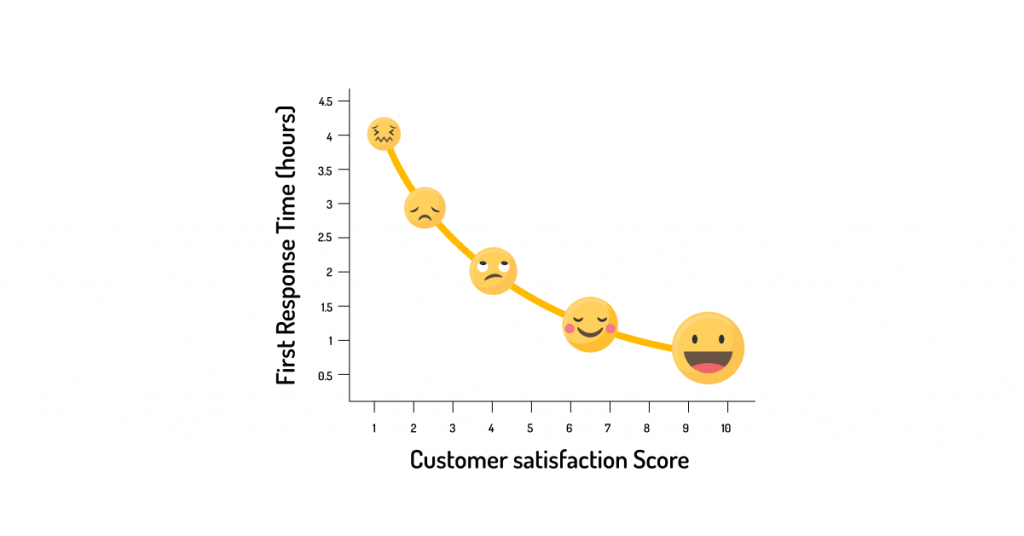
Backed by numerous researches, today’s consumers highly value the speed of support they receive from brands whenever they reach out for help. E.g., a study by HubSpot revealed that 90% of customers rate an ‘immediate’ response as essential or very important when they have a customer service question, while slow response time is the most frustrating aspect of getting customer service help for 19% of people.
Along with other metrics and KPIs, such as First Call Resolution and the Average Handle Time, the Average First Response Time is tightly associated with customer satisfaction. That is why contact centers often aim to keep their FRT as low as possible since a speedy first response signals to customers that your customer support team is taking their requests seriously. Thus, in most cases, reducing the Average First Response Time contributes to improving your Customer Satisfaction (CSAT) Scores.
However, though First Response Time is a valuable metric, contact centers should also be aware of its limitations. Since FRT only measures the speed at which customer requests are answered and doesn’t measure how fast or how efficiently the issue is resolved, it shouldn’t be seen and prioritized as the sole driver of customer satisfaction.
How to Optimize First Response Time in a Contact Center
Set specific goals for First Response Time
Setting clear and realistic FRT goals for each of your customer support channels is the first step in optimizing First Response Times while also improving customer support and customer satisfaction. It’s important to align your FRT goals with your customer expectations and your Service Level Agreements (SLAs). Other factors to take into account when setting FRT goals are FRT benchmarks for your specific industry, available resources, and historical performance. On top of that, FRT goals should be realistic and attainable – otherwise, they can demotivate agents.
Implement omnichannel customer support
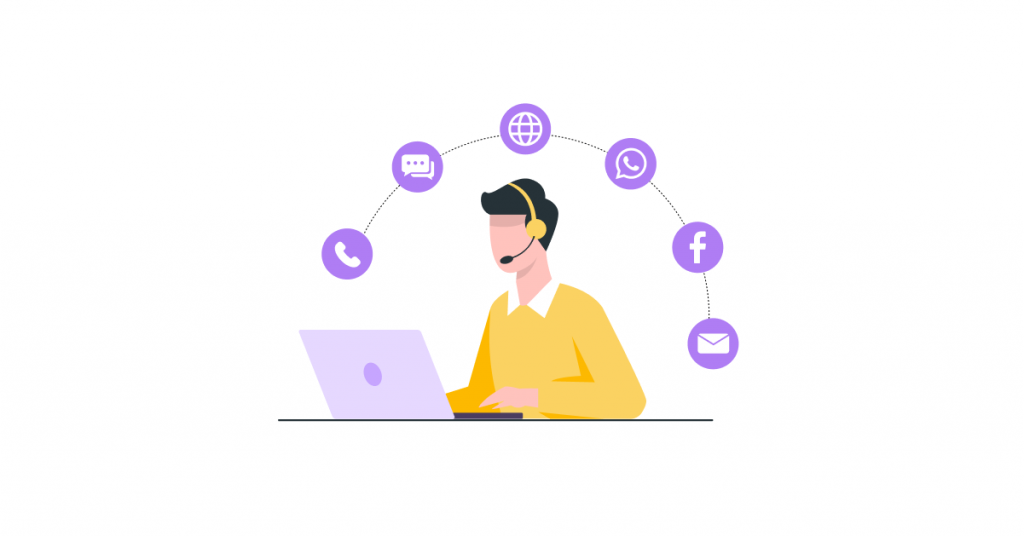
If you have typically high inbound call volumes, and callers have to wait in long call queues to get their call picked up by an agent, implementing omnichannel support and offering customers multiple support channels they can use to reach out to your support agents can reduce the inbound call volumes and thus lower First Response Time for inbound calls.
With an omnichannel contact center software solution like VoiceSpin’s AI Messaging, you can integrate multiple channels, such as email, live chat, social media, and Instant Messaging apps, into a single platform and ensure seamless communication regardless of the channel customers choose to connect with your support team.
Reduce multitasking
While theoretically, a single customer service agent can handle multiple support channels simultaneously, multitasking creates an overwhelming experience for agents and may ultimately result in lost focus, longer Average Handle Time, and increased customer frustration. Enabling agents to handle requests from a single support channel instead of spreading their attention across multiple channels not only helps reduce the Average Response Time for a particular channel, but also increases the accuracy and quality of support delivered to customers and accounts for faster issue resolution and improved CSAT scores.
Leverage AI-powered chatbots

AI-powered chatbots and virtual assistants can provide customers with instant automated responses and answer customer questions, allowing them to get information and resolve basic issues on their own, often without needing to interact with a support representative. That helps reduce the need for human-assisted service and lowers the overall number of customer support requests, freeing up agents and enabling them to handle inquiries faster, thus reducing the Average First Response Time.
Provide self-service options
In addition to AI-driven chatbots and conversational AI systems, businesses can take advantage of providing other self-service options to their customers. These could include knowledge bases, FAQs, IVR self-service menus, customer self-service portals, community forums, video tutorials, webinars, how-to articles, guides, manuals, etc. – anything that can help customers resolve issues independently without having to contact a support team. As mentioned above, that reduces incoming support requests and helps improve First Response Time for those inquiries that require agent assistance.
Improve agent experience
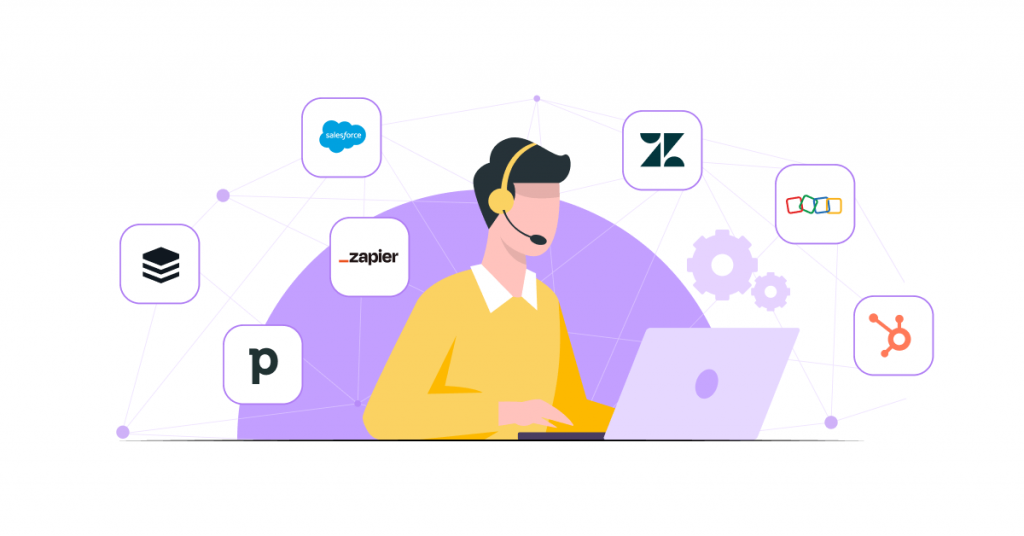
Navigating hard-to-use software systems and having to constantly switch between several disjointed platforms presents one of the biggest pain points for contact center agents. Not only can it negatively impact their overall experience, but also results in longer First Response Times. To overcome this challenge, opt for omnichannel contact center solutions that combine different communication channels and can integrate with your CRM system to ensure a seamless experience for agents and eliminate the need to switch between multiple systems, resulting in improved FRT.
Invest in agent training
Investing in ongoing agent training and coaching helps ensure that agents know the ins and outs of your products or services and are able to answer customer questions and resolve issues quickly, without having to spend much time looking up for information. Improving agents’ soft skills, such as call handling, de-escalation, dealing with frustrated customers, etc., can also contribute to their ability to handle support requests quickly and efficiently, reducing FRT and AHT and improving FCR rates.
Utilize real-time monitoring and analytics
By using real-time monitoring tools and analytics, contact center managers can keep track of the most critical metrics and KPIs, such as Call Abandonment Rate, Wait Times, Average Handle Time, First Call Resolution Rate, Call Escalation Rate, and others, to identify and eliminate bottlenecks that may be negatively impacting First Response Times. Managers can also use historical data to spot trends, forecast peak times, and allocate resources accordingly to ensure agents are able to meet the established SLAs for First Response Time.
Prevent agent burnout
Contact center jobs are stressful and demanding by nature due to several reasons. When agents are overwhelmed with heavy workloads and experience burnout in the workplace, that may lead to lost motivation, decreased engagement, increased call avoidance, and poor performance, resulting in the agents’ inability to maintain First Response Times within SLAs. Building a supportive, stress-free contact center environment and a culture of gratitude helps prevent agent burnout while improving FRT and overall agent performance.
Outsource to BPO call centers
Outsourcing inbound customer support operations to a BPO call center might be an efficient and cost-effective way to support customers and ensure a low First Response Time even during peak times. While there are certain challenges and drawbacks to consider before deciding to partner with a BPO contact center, that may be an effective solution for businesses with fluctuating call volumes, enabling them to handle incoming service requests quickly and efficiently without having to expand their in-house support team.

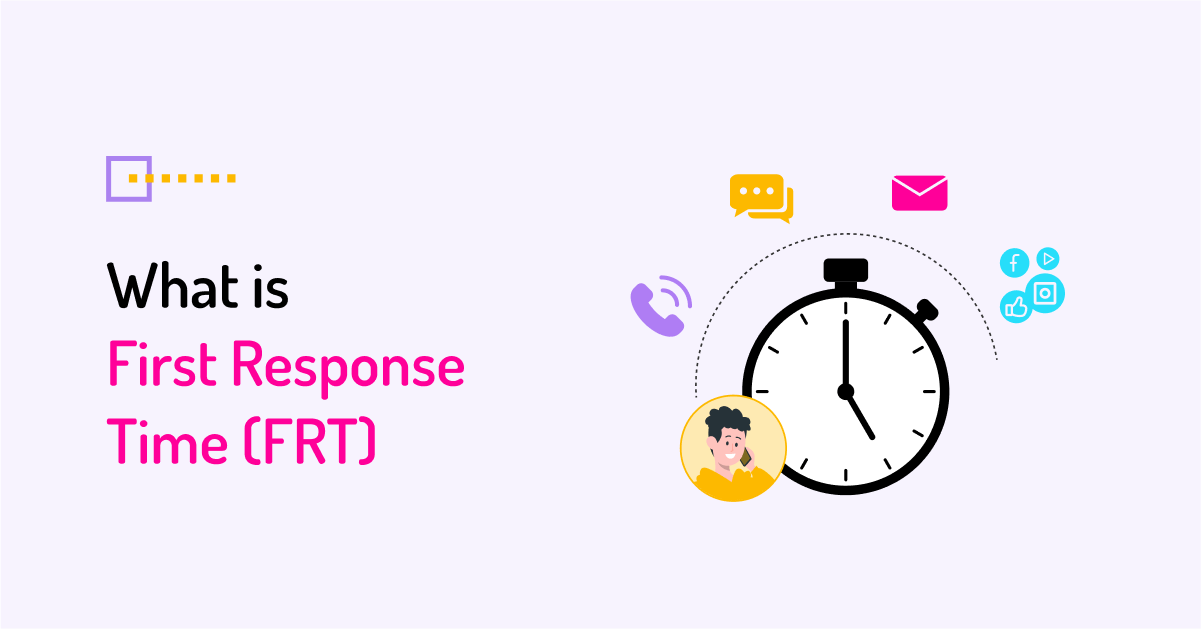

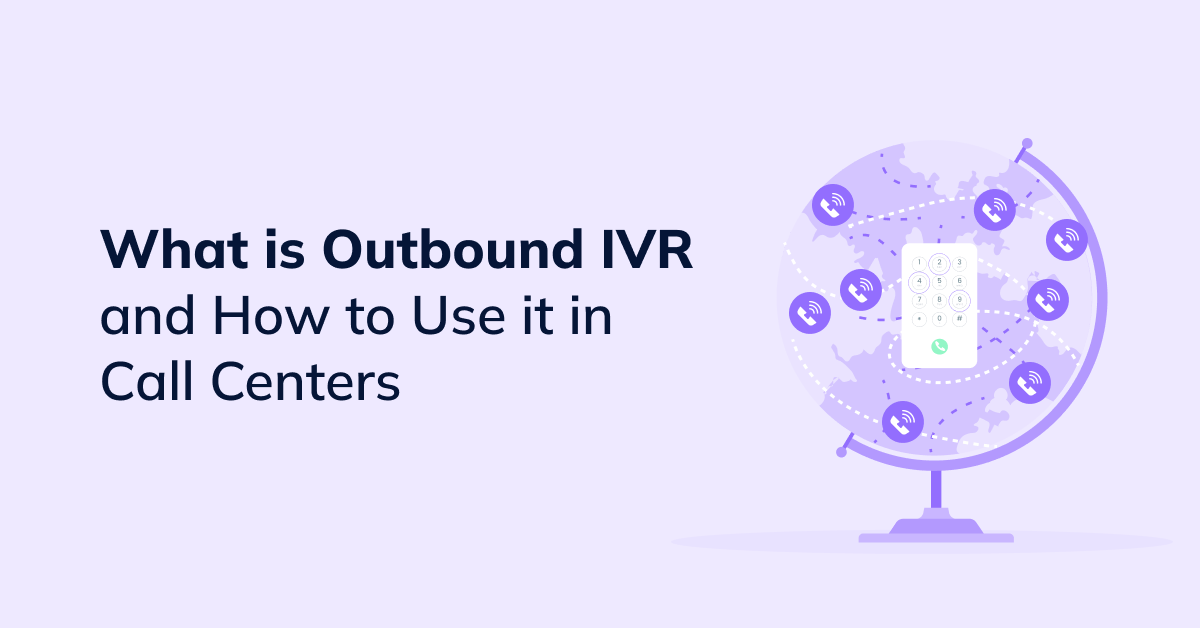
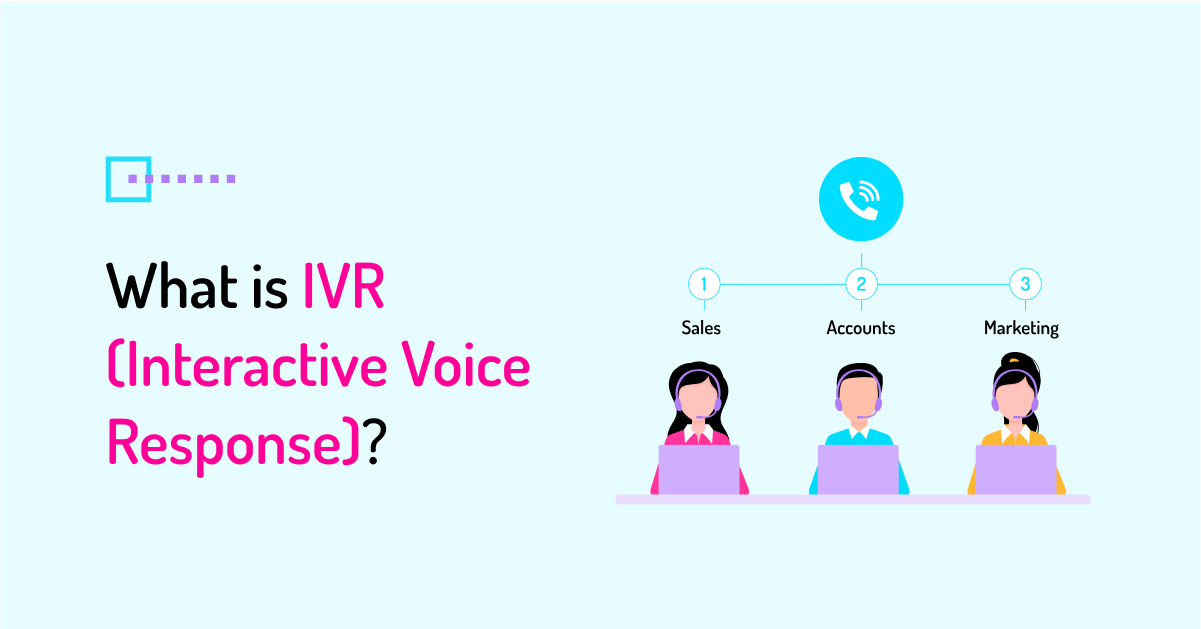
 +18889082995
+18889082995
 +442036084160
+442036084160
 +97237237006
+97237237006